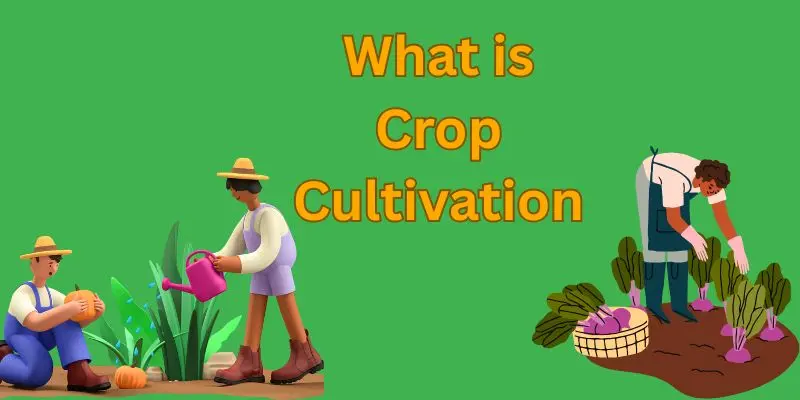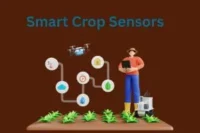What is Crop Cultivation? Explain process ,Types & Importance
Published: 23 Apr 2025

Crop cultivation… uh, so, it’s like… growing plants? I mean, I think it’s about farming, but not just any kind—specifically the kind where people grow stuff like wheat, rice, or corn in big fields. But wait, is that all it is? Or does it also include, like, taking care of the soil and watering and all that? Honestly, it’s kind of confusing when you think about how much actually goes into it—seeds, weather, pests, tools… there’s a lot more behind the simple idea of “just growing crops.”
Definition:
Crop cultivation is the process of growing plants systematically for food, fiber, medicine, or other products that sustain life and industry. It involves preparing the land, planting seeds, nurturing growth, and harvesting the produce. This practice is at the heart of agriculture and vital to human survival.
So, guys, without wasting time, let’s jump into the article to learn
Process of Crop Cultivation:
Crop cultivation follows a series of carefully managed steps that guide a seed from soil to harvest.
- Land Preparation
- Sowing Seeds
- Irrigation
- Fertilization
- Weed and Pest Management
- Harvesting
Briefly Explanation
Now we Explore all Feature For Your Convenience
1. Land Preparation
The soil is tilled and leveled to break up clumps and improve aeration, drainage, and root penetration.
2. Sowing Seeds
Seeds are selected and planted at appropriate depths and spacing to ensure optimal growth.
3. Irrigation
Water is supplied through rainfall or artificial methods such as drip irrigation, sprinklers, or canals to support plant development.
4. Fertilization
Organic or chemical fertilizers are added to the soil to provide essential nutrients like nitrogen, phosphorus, and potassium.
5. Weed and Pest Management
Unwanted plants and harmful insects are managed using manual methods or eco-friendly pesticides to protect crop health.
6. Harvesting
Crops are collected at peak maturity using manual labor or mechanized tools to ensure maximum yield and quality.
Types of Crops in Cultivation:
The types of crops grown vary based on climate, soil, and the needs of the population.
- Cereal Crops
- Pulse Crops
- Oilseed Crops
- Fibre Crops
- Horticultural Crops
- Cash Crops
- Spice and Condiment Crops
- Medicinal and Aromatic Crops
Briefly Explanation
Now we Explore all feature in detail
Cereal Crops
These are grain-producing plants like rice, wheat, and maize.
They are a staple food source, rich in carbohydrates.

Pulse Crops
These include lentils, peas, and beans.
Pulses are high in protein and important for a vegetarian diet.
Oilseed Crops
Examples are mustard, sunflower, and groundnut.
These crops are grown for extracting edible oils.
Fibre Crops
Main crops include cotton, jute, and flax.
They are cultivated for making textiles and ropes.
Horticultural Crops
Includes fruits, vegetables, and ornamental plants.
These are grown for food, decoration, and landscaping.
Cash Crops
Examples are sugarcane, tobacco, and coffee.
These crops are grown mainly for sale and profit.
Spice and Condiment Crops
Includes crops like turmeric, chili, and coriander.
Used to flavor, color, and preserve food.
Medicinal and Aromatic Crops
Examples include aloe vera, tulsi, and lemongrass.
They are used in pharmaceuticals, cosmetics, and wellness.
Importance of Crop Cultivation:
Crop cultivation is more than an agricultural activity—it is the backbone of civilization. Here’s why it matters:
- It feeds the global population and addresses food security.
- It provides income and employment to over a billion people worldwide.
- It supports economies, especially in developing countries where agriculture is a primary source of livelihood.
- It helps preserve cultural heritage and traditional knowledge passed down through generations.
- Sustainable cultivation contributes to environmental conservation and combats the effects of climate change.
FAQs about Internet
Here are some of the most frequently asked questions about What is Crop Cultivation?
Crop cultivation is the process of growing plants for food, fiber, or other uses.
It includes steps like land preparation, sowing, irrigation, and harvesting.
Irrigation provides necessary water to crops when rainfall is insufficient.
It helps maintain soil moisture and supports healthy plant growth.
Cereal crops are grains like rice, wheat, and corn.
They are staple foods rich in carbohydrates and energy.
Fertilizers provide essential nutrients like nitrogen and potassium.
They enhance soil fertility and promote healthy crop growth
Farmers use manual removal, eco-friendly pesticides, or crop rotation.
Weed and pest control protects crops from damage and loss.
Conclusion
Hey! The content on crop cultivation covers the key steps involved in growing crops, including land preparation, sowing, irrigation, fertilization, pest control, and harvesting. It also outlines different types of crops like cereals, pulses, oilseeds, fibers, and medicinal plants. Understanding these types is important because each has specific climate, soil, and care needs—knowledge that helps farmers choose the right crop for better yield, soil health, and economic value.

- Be Respectful
- Stay Relevant
- Stay Positive
- True Feedback
- Encourage Discussion
- Avoid Spamming
- No Fake News
- Don't Copy-Paste
- No Personal Attacks

- Be Respectful
- Stay Relevant
- Stay Positive
- True Feedback
- Encourage Discussion
- Avoid Spamming
- No Fake News
- Don't Copy-Paste
- No Personal Attacks





